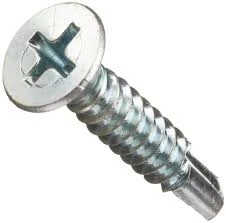Steel Deck Bracing Techniques for Enhanced Structural Stability and Load Distribution
Understanding Steel Deck Bracing Importance, Types, and Applications
Steel deck bracing is a crucial aspect of structural engineering that enhances the stability and strength of steel deck systems, widely used in various construction projects. This technique is especially pertinent for ensuring that structures can withstand lateral loads, including wind and seismic forces. Understanding the fundamentals of steel deck bracing, its types, and applications is essential for anyone involved in construction or engineering.
The Importance of Steel Deck Bracing
Bracing is integral to the overall performance of steel structures. Without adequate bracing, steel decks can be vulnerable to deformation, leading to structural failures that can endanger safety and incur costly repairs. Steel deck bracing helps distribute loads effectively, providing additional support where it may be needed most. By preventing excessive movement in the structure during high winds or earthquakes, bracing not only safeguards the integrity of the building but also enhances the safety of its occupants.
Steel deck bracing plays a vital role in resisting shear forces, which are horizontal forces acting on the structure. When a building undergoes lateral loading, the risk of bending or shear failure increases. Properly designed bracing systems can mitigate these risks, ensuring that the structure maintains its shape and load-bearing capacity under stress.
Types of Steel Deck Bracing
There are several types of bracing systems that can be used in steel deck construction, each with its distinct advantages and applications. The most common forms include
1. Cross Bracing This method involves the use of diagonal braces that cross each other to form an X pattern. Cross bracing is highly effective at providing lateral support and distributing forces evenly across the structure. This design is commonly found in skyscrapers and large commercial buildings.
2. K-Bracing In K-bracing systems, two diagonal members, shaped like the letter K, connect to a vertical member. This design provides excellent stability while allowing for some flexibility, making it suitable for areas with moderate seismic activity.
3. Tension and Compression Bracing This approach involves using braces that primarily carry tension or compression forces. Tension braces pull away from the structure towards the support, while compression braces push towards it. This duality helps to manage loads effectively in different scenarios.
steel deck bracing

4. Brace Frames These consist of a series of vertical and diagonal members interconnected to form a frame. Brace frames can be customized based on the specific load requirements in a project, offering flexibility in design.
5. Shear Walls While not a bracing system in the traditional sense, shear walls provide resistance to lateral forces and are often used in conjunction with bracing systems. They can be integrated into the steel deck or constructed as separate entities within the building.
Applications of Steel Deck Bracing
Steel deck bracing is crucial in multiple construction applications, particularly in commercial, industrial, and residential projects. Its utility is evident in high-rise buildings, bridges, warehouses, and stadiums, where large open spaces necessitate robust structural support.
1. Commercial Buildings In tall office buildings, cross-bracing is commonly utilized to provide stability against wind loads, ensuring comfort and safety for occupants.
2. Industrial Structures Factories and warehouses often employ K-bracing or shear walls, which can handle significant lateral forces while maintaining open floor plans for operational efficiency.
3. Bridges The dynamic loads encountered in bridges require sophisticated bracing systems to ensure structural integrity over time, accommodating both vertical and lateral forces.
4. Residential Housing In some cases, residential buildings also benefit from steel deck bracing, especially when located in areas prone to hurricanes or earthquakes, where stability is crucial.
Conclusion
Steel deck bracing is a vital component of modern structural engineering, providing the necessary support to ensure the safety and durability of buildings and infrastructure. By understanding the various types of bracing systems and their applications, engineers and architects can design structures that withstand the test of time and environmental forces. In a world where safety and efficiency take precedence, the role of effective bracing strategies cannot be underestimated in creating resilient and robust structures. As construction continues to evolve, innovations in steel deck bracing will contribute to safer and more sustainable building practices.
-
Weatherproof Plastic Expansion Anchors for OutdoorNewsJun.06,2025
-
Sustainability in the Supply Chain: Eco-Friendly TEK Screws ProductionNewsJun.06,2025
-
Load-Bearing Capacity of External Insulation FixingsNewsJun.06,2025
-
Double Head Bolts: Enhancing Efficiency in Industrial MachineryNewsJun.06,2025
-
Corrosion Resistance in Chipboard Screws: Coatings for Wholesale DurabilityNewsJun.06,2025
-
Butterfly Toggle Bolts : Enhancing Structural ResilienceNewsJun.06,2025
